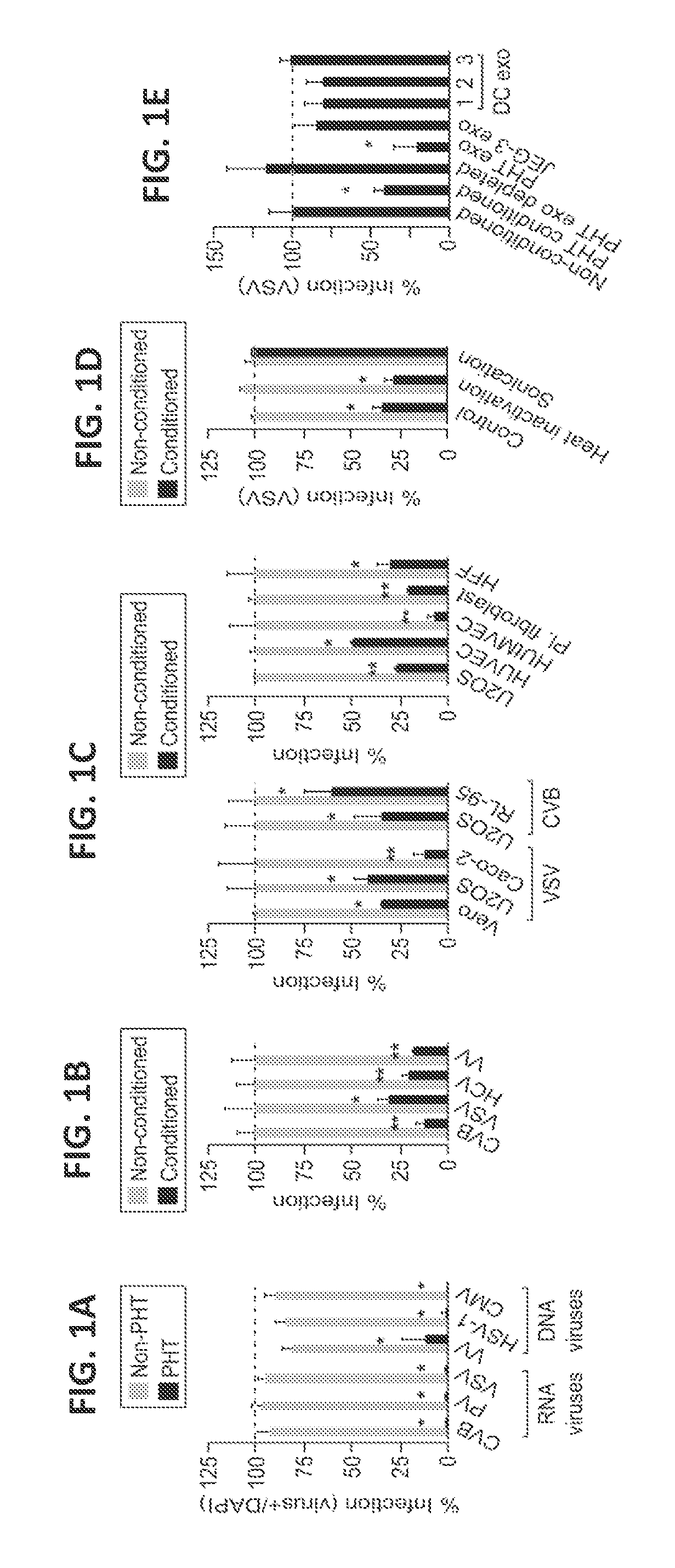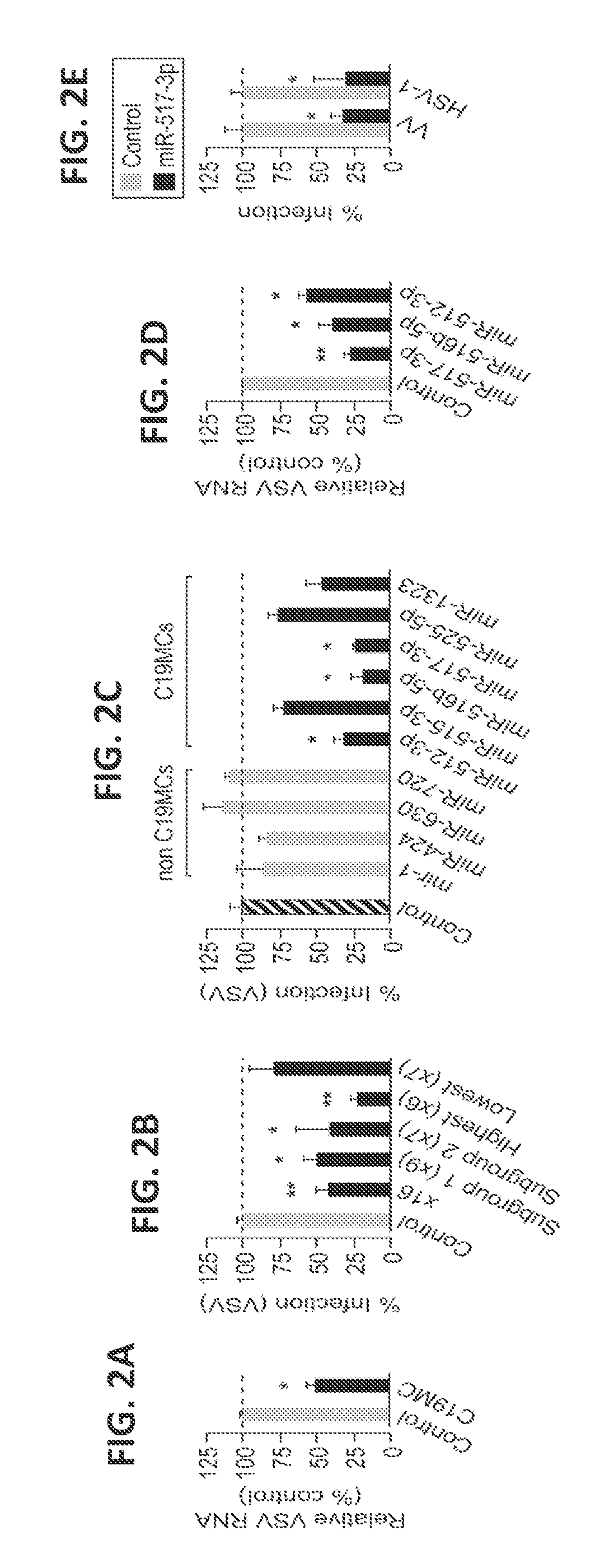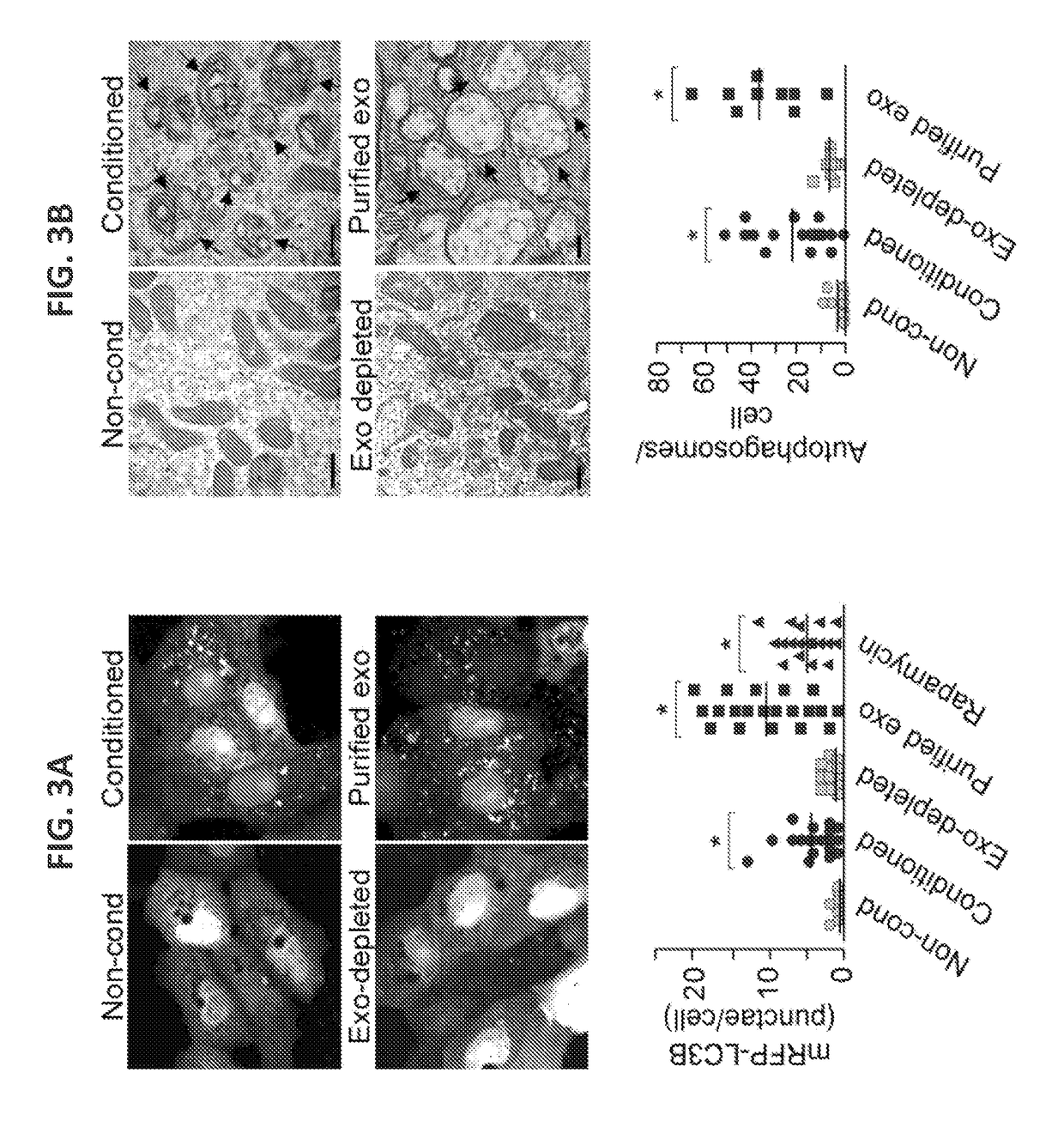Use of the chromosome 19 microRNA cluster (C19MC) for treating viral disease and promoting authophagy
a technology of chromosome 19 and mirna, which is applied in the field of primate-specific chromosome 19 mirna cluster, can solve the problems of compromise maternal health and jeopardize pregnancy, and achieve the effect of promoting viral resistance and inducing autophagy of recipient cells
- Summary
- Abstract
- Description
- Claims
- Application Information
AI Technical Summary
Benefits of technology
Problems solved by technology
Method used
Image
Examples
example 1
Materials and Methods
[0138]This example describes the materials and experimental procedures used for the studies described in Example 2.
Cells and PHT Exosome Purification
[0139]Primary human trophoblasts (PHT cells) were isolated from normal singleton term placentas using the trypsin-deoxyribonuclease-dispase / Percoll method as described by Kliman et al., with previously published modifications (Kliman et al., Endocrinology 118, 1567-1582, 1986; Nelson et al., Am J Obstet Gynecol 180, 896-902, 1999). Cells were maintained in DMEM (Sigma) containing 10% fetal bovine serum (FBS, Hyclone, Logan, Utah, USA) and antibiotics at 37° C. in a 5% carbon dioxide (CO2)-air atmosphere. Cells were maintained 72 h after plating, with cell quality monitored both morphologically (by microscopy) and by medium human chorionic gonadotropin (hCG) levels, determined by enzyme-linked immunosorbent assay (ELISA, DRG International, Mountainside, N.J.), showing a characteristic increase in medium hCG as cytotr...
example 2
Human Placental Trophoblasts Confer Viral Resistance to Recipient Cells by the Release of miRNAs and the Induction of Autophagy
[0168]This example describes the finding that PHTs are highly resistant to infection by a number of different types of viruses. This resistance is mediated by exosomes containing miRNAs encoded by the primate-specific chromosome 19 miRNA cluster (C19MC).
PHT-Derived Exosomes Protect Recipient Cells from Viral Infection
[0169]The studies described herein determined that PHT cells were resistant to infection by a panel of viruses, including coxsackievirus B3 (CVB), poliovirus (PV), vesicular stomatitis virus (VSV), vaccinia virus (VV), herpes simplex virus-1 (HSV-1), and human cytomegalovirus (CMV), when compared to non-PHT cells (FIG. 1A). This lack of viral replication was not due to inefficient viral binding and / or entry, or to defects in common endocytic pathways utilized by viruses for their entry, such as clathrin- or caveolar-mediated pathways. It was fou...
example 3
C19MC microRNAs Inhibits HIV Replication
[0185]This example demonstrates that PHT-conditioned media, as well as particular miRs encoded by the C19MC, also are capable of inhibiting infection by human immunodeficiency virus (HIV).
[0186]TZM-bl cells are HeLa cell derivatives that express high levels of CD4 and the HIV co-receptors CXCR4 and CCR5. These cells are stably transfected with LTR-driven firefly luciferase and LTR-driven β-galactosidase cassettes. Infection of TZM-bl cells with HIV-1 and HIV-2 isolates results in the induction of luciferase and β-galactosidase, allowing for the detection and quantification of infection.
[0187]TZM-bl cells were pre-incubated with PHT conditioned medium or control medium for 24 h prior to infection with HIV-1. Cells were then infected with serial dilutions of HIV (0, 3250, 7500, 15,000 and 30,000 pg / ml) for 48 h, and infection levels were assessed by Tat-induced luciferase reporter gene expression, in triplicate. As shown in FIG. 9, PHT-condition...
PUM
| Property | Measurement | Unit |
|---|---|---|
| size | aaaaa | aaaaa |
| size | aaaaa | aaaaa |
| pH | aaaaa | aaaaa |
Abstract
Description
Claims
Application Information
 Login to View More
Login to View More - R&D
- Intellectual Property
- Life Sciences
- Materials
- Tech Scout
- Unparalleled Data Quality
- Higher Quality Content
- 60% Fewer Hallucinations
Browse by: Latest US Patents, China's latest patents, Technical Efficacy Thesaurus, Application Domain, Technology Topic, Popular Technical Reports.
© 2025 PatSnap. All rights reserved.Legal|Privacy policy|Modern Slavery Act Transparency Statement|Sitemap|About US| Contact US: help@patsnap.com



